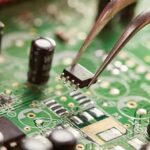Your PS5 controller is the gateway to immersive gameplay, smooth performance, and fluid movement in every title you play. Whether you’re battling through intense action scenes or navigating complex puzzles, your DualSense controller is supposed to respond instantly and intuitively. But when subtle changes in behavior occur, it’s easy to overlook them—until those signs turn into major disruptions. Ignoring early symptoms can transform a minor glitch into an expensive repair. To avoid prolonged downtime or frustrating gaming experiences, it’s crucial to recognize the signs that indicate your PS5 controller might need professional attention. From delayed button responses to drifting analog sticks, these seemingly small problems can severely impact your gameplay. Understanding the warning signs and acting quickly can save you both time and money. In this article, you’ll discover the most common signals your PS5 controller is on the brink of failure and what steps to take to bring it back to life.
Buttons Are Sticking or Unresponsive
One of the most common signs that your PS5 controller needs repair is when the buttons begin to stick, become less responsive, or stop working entirely. It may start with the occasional missed input during gameplay and quickly evolve into a complete button failure. Sticky or stuck buttons can be caused by internal dirt buildup, worn-out rubber membranes, or internal misalignment due to drops or impact. If you notice that you’re pressing harder than usual to get a response or the buttons are jammed in place, this is your cue to consider repairs. Left untreated, it could lead to further complications within the controller’s circuit board, making the issue more complex and costly to resolve.
Analog Stick Drift Becomes Unbearable
Stick drift is a known issue across gaming platforms, and PS5 controllers are not exempt. When your character or cursor moves without you touching the analog stick, it’s a clear indicator that the potentiometer sensors beneath the thumbstick are worn out or malfunctioning. Over time, even casual usage can lead to drift, making precise gameplay nearly impossible. Whether you play competitive shooters or enjoy story-driven adventures, analog stick drift can disrupt the experience. Many gamers try to recalibrate or adjust their controllers via settings, but if the drift persists, it’s a sign of internal hardware wear that requires professional repair.
Triggers Start to Feel Unnatural
Adaptive triggers are one of the standout features of the DualSense controller, delivering dynamic feedback based on in-game actions. If the triggers start to feel too loose, too stiff, or entirely unresponsive, it may indicate mechanical damage or internal sensor failure. Triggers that click but don’t register any input, or ones that feel spongy instead of firm, may have broken springs or damaged actuators. These components are highly sensitive and often the first to fail if the controller is dropped or misused. If you’re experiencing inconsistencies with the trigger response in certain games or across the board, it’s time to consider a repair service before the issue worsens.
Vibration Feedback Stops Working
The immersive haptic feedback of the PS5 controller is designed to respond with precise vibration during gameplay. If you’re no longer feeling that unique rumble in your hands when it should be happening—like during car crashes, gunfire, or environmental changes—it could be a red flag. Internal motors responsible for these vibrations may have burned out or disconnected from the mainboard due to shock or wear. Some players mistake this lack of feedback for a game issue or setting mishap, but if other games show the same absence of haptics, the problem likely lies within the controller hardware itself.
Controller Won’t Stay Connected
Wireless connectivity issues are not only frustrating but also severely limit your ability to play. If your PS5 controller constantly disconnects during gameplay or fails to sync with the console, this is more than a nuisance. While occasional drops can be due to software glitches or interference, repeated failures are often the result of damaged internal Bluetooth antennas or circuit board defects. Additionally, firmware corruption or water damage can also cause pairing problems. When resetting and resyncing the controller doesn’t help, a deeper inspection and repair may be necessary to restore full connectivity.
Rapid Battery Drain or Failure to Charge
Battery-related issues are a major sign that your controller might be nearing the end of its functional life. If you notice your PS5 controller is draining unusually fast—even after a full charge—it may be due to a faulty lithium-ion battery. On the other hand, a controller that fails to charge at all, especially when using different cables and ports, could be dealing with a broken charging port, motherboard issue, or damaged battery connection. Ignoring battery issues not only limits your playtime but also risks overheating or complete power failure if the problem worsens.
Random Button Presses or Ghost Inputs
When your character moves or performs actions without you pressing anything, it’s referred to as ghost input. This erratic behavior can completely derail your gaming experience, causing you to lose progress or miss critical moments. These phantom actions often stem from a malfunctioning circuit board, water damage, or excessive wear on internal contact points. Ghost inputs are particularly problematic because they can happen unpredictably and affect multiple buttons or sticks simultaneously. Once you start to notice this happening regularly, a repair is the only way to ensure the controller behaves as it should.
Controller Overheats During Gameplay
A PS5 controller should stay relatively cool during use. If you begin to notice it becoming unusually warm—especially around the battery or back panel—this is a potential safety hazard. Overheating may be caused by a short circuit, damaged internal components, or a malfunctioning battery. Continued use in this state can not only damage the controller further but also pose risks to the user. Heat issues are serious and should be addressed immediately by a repair technician who can safely replace damaged parts or identify deeper electrical problems.
USB-C Port Feels Loose or Damaged
The USB-C port is vital for both charging and wired gameplay. If the port begins to feel wobbly, requires constant adjustment to establish a connection, or doesn’t register at all, it’s likely suffering from internal wear or a detached solder joint. This can happen due to repeated stress from plugging and unplugging cables, or from using low-quality charging accessories. Without a functioning USB-C port, you risk complete loss of charging ability, rendering the controller unusable. This is a precise repair job that typically requires professional tools and expertise.
Audio Jack Stops Working
Many gamers rely on their PS5 controller’s audio jack to plug in headsets for immersive sound and communication. If your microphone no longer works or you can’t hear anything through the connected headphones, the 3.5mm audio jack may be damaged or disconnected from the controller’s board. Sometimes, the problem may stem from bent pins or foreign debris inside the port. Audio jack issues can be frustrating, especially during multiplayer sessions, and may not be solvable through software tweaks alone. A hardware inspection is often required to pinpoint and fix the issue.
Inconsistent Light Bar Behavior
The PS5 controller’s light bar serves as both a visual element and a functional indicator. If it starts blinking unexpectedly, changes colors without prompt, or fails to light up entirely, it may reflect deeper electrical or firmware-related problems. While sometimes these behaviors can be traced to console sync issues, repeated abnormal light behavior often points to internal controller faults. It’s especially concerning if these issues are accompanied by other symptoms like disconnections or input lag. In such cases, the light bar might be your controller’s silent cry for help.
Motion Sensor or Touchpad Malfunctions
Motion sensors and the touchpad are critical features for certain games and navigational controls. If swiping across the touchpad no longer registers or the motion sensor fails to respond during motion-sensitive tasks, it’s clear the internals are not functioning as intended. These components can degrade over time or suffer from internal disconnection due to impact. Since they aren’t used in every game, many players overlook them until they’re needed—and by then, it’s too late. Addressing these issues early ensures every feature remains fully operational when required.
At Techy Cooper City, We’re Here to Help
When any of these symptoms start affecting your gameplay, don’t wait for the controller to fail completely. At Techy Cooper City, we specialize in fast, reliable PS5 repair services to get you back in the game. Whether you’re dealing with HDMI port issues, overheating, software glitches, or power problems, our expert technicians are equipped to handle it all. We understand how important your console is, so we work efficiently to restore peak performance and ensure your PlayStation 5 runs like new. If you’re looking for trustworthy PS5 Repair in Cooper City, FL, look no further—your controller is in the best hands with us.
Conclusion: Know When to Act
Recognizing the early signs that your PS5 controller needs repair can save you from costly replacements and interrupted gaming. Whether it’s subtle button issues, drifting sticks, or complete connectivity failures, each problem has a solution—especially when caught early. The longer these issues are ignored, the greater the damage they can cause to your controller’s internal components. By staying alert and taking action when you notice these warning signs, you can extend the life of your controller and maintain the high-quality performance the PS5 is known for.
- Top Signs Your PS5 Controller Needs Quick Repair
- In this article, you’ll discover the most common signals your PS5 controller is on the brink of failure and what steps to take to bring it back to life.
- ps5 repair
Related posts:
 Why KBH Games Is Perfect for Family-Friendly Online Entertainment
Why KBH Games Is Perfect for Family-Friendly Online Entertainment
 Build a Seamless School Portal with These Powerful Templates
Build a Seamless School Portal with These Powerful Templates
 7 Ways Aerospace Companies Are Using Composites to Elevate Aerial Robotics
7 Ways Aerospace Companies Are Using Composites to Elevate Aerial Robotics
 The Ultimate Web Development Checklist for Building High-Performance Digital Experiences
The Ultimate Web Development Checklist for Building High-Performance Digital Experiences
 10 Local SEO Tips to Boost Your Electronics Repair Shop Online
10 Local SEO Tips to Boost Your Electronics Repair Shop Online
 Optimizing Healthcare Operations in Qatar Through Dynamics 365 Finance and Operations
Optimizing Healthcare Operations in Qatar Through Dynamics 365 Finance and Operations
 How to Hire the Perfect Developer for Your Startup: A Step-by-Step Guide
How to Hire the Perfect Developer for Your Startup: A Step-by-Step Guide
 HR Software in India: Transforming Workforce Management with TankhaPay
HR Software in India: Transforming Workforce Management with TankhaPay








